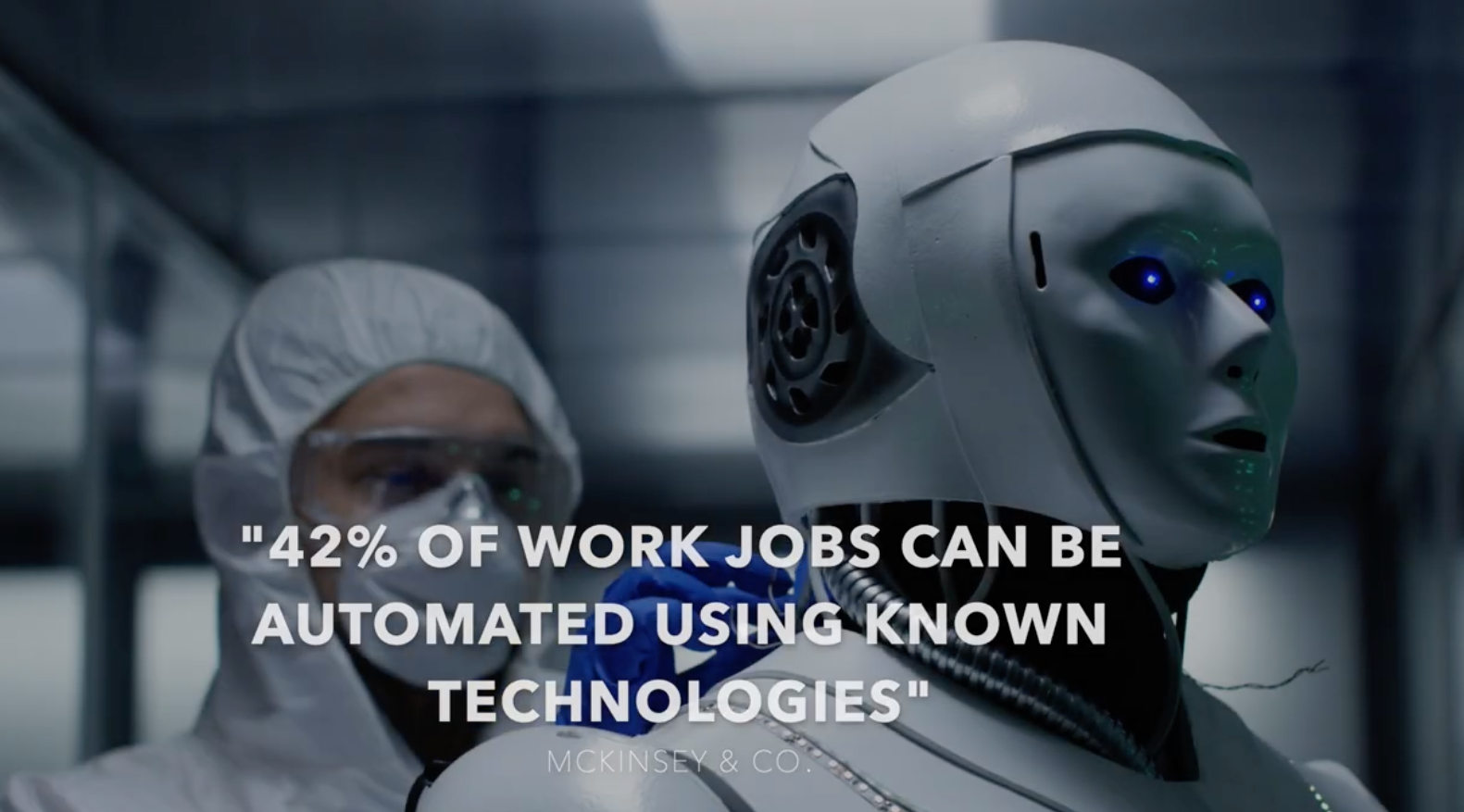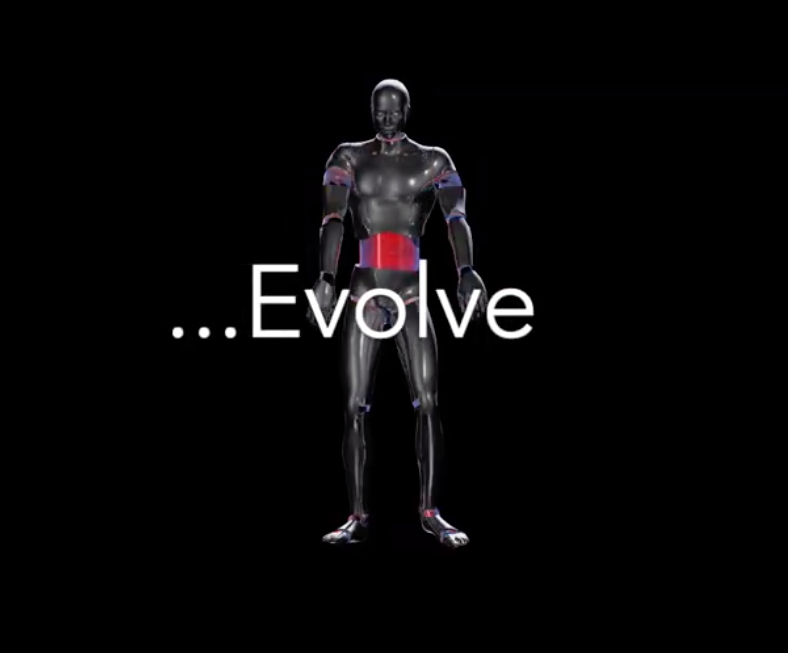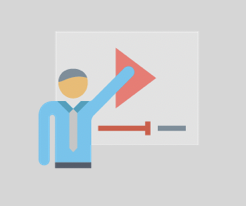Guide to Video Marketing Apps and their use in B2B Sales Enablement
Make more use of video in your b2b marketing





Synopsis
Are you using video marketing apps in your B2B Marketing and B2B Sales Enablement?
If you’re not, you should be. Video’s an essential ingredient these days of any sales and marketing program. If you aren’t convinced…
According to Hubspot, 81% of businesses say they use video in their inbound marketing to good effect.
While a recent study by LinkedIn reported that 62% of respondents say video marketing helps them to build brand awareness.
The good news is, there are lots of great, affordable video marketing apps, that B2B Sales Enablers can use themselves to drive sales performance, not just to create interest in your brand, but also to generate sales leads, close deals, educate Users and keep customers happy!
That’s why we’ve put this guide to video marketing apps together exclusively for Marketing and B2B Sales Enablement professionals to help unravel the best tools and choices for video marketing in 2020, for those working on a shoe-string, or looking to keep their agency costs down. Find out what video marketing apps (and tools) we use – and WHY we use them.
Reach out to one of the Newton Day team if you’d like to find out more!
Some Facts
HERE ARE SOME QUICK FACTS ABOUT VIDEO MARKETING:
- It’s thought more video content is uploaded in 30 days than major U.S. TV networks have created in 30 years.
- Facebook users consume 100 million hours of videos every day, and on Instagram, it’s thought users watch 10 billion videos on a daily basis.
- Over 50% of video marketers use LinkedIn as a major channel and, of those, 84% found it to be an effective strategy. As the result, almost 2 in 3 marketers say they’re using video in 2019, up 55% from the previous year.
- The success of video is changing marketing priorities.
Choosing Your Video Marketing Apps
There are a wide range of video marketing apps, tools and services available to B2B marketing and sales enablement professionals to fulfil their video marketing needs. Many of them are surprisingly inexpensive. In fact, if you read this article, we’ll uncover how to achieve the professional results you’re looking for on a bargain basement budget price.
I should say, we’re not video marketing experts, but in our business we’re asked to produce A WHOLE LOT of videos… so much so that sometimes our studios resemble more of a video production and editing suite than a B2B marketing agency! And, because we specialize in B2B Sales Enablement , the ‘story and script’ of the video is every bit as important as the production quality. Getting the blend right isn’t easy – and we’d argue there are benefits working with an agency that supports the end to end process.
Video marketing performs a lot of roles in B2B Sales Enablement and Marketing. We go into the Use Cases in more detail later in the article, but as a brief introduction, here’s a quick round-up of the most popular ways practitioners are using video and the video marketing apps you can use to get the job done. It gives some indication of the influence video has on marketing these days!!!
Use Cases for Video in B2B Marketing and B2B Sales Enablement
In this impartial (practitioner-led) article we offer some insights into which apps work best for b2b sales enablement situational needs. The Use Cases we cover are:
- Social Media Marketing
- Simple Product/Service Explainer
- Sales Pitch
- The Corporate Event
- Evidencing Credentials
- How-To and Training
- Meet the Expert
- Whiteboarding
Oh, and it might be useful for me to explain (for those not used to the term ‘B2B Sales Enablement’) that ours is a B2B Marketing Agency specializing in helping B2B tech, professional and outsourcing companies to grow their sales results by unbundling and rebuilding how they attract, engage, delight and grow their customer accounts. It’s a discipline that blends (1) business strategy with (2) marketing, (3) sales process understanding/coaching, (4) learning and education, and (5) program management. That means we have requirements for video marketing across the gamut of activities we work on.
Naturally, we try to keep the number of tools we use to the minimum because we need to learn how to use them and pay for them across our team to build a healthy and diverse skills coverage across our team. That means we haven’t tried every tool that’s out there. What we have done in this article is highlight other similar video marketing apps to those that we’ve elected to use.
Simple Explainer Videos
The Use Case
This is the video format you’d expect to appear on the landing page of a website. It was Dropbox that arguably made the biggest impression with its simple explainer video when the company first launched its service. At the time, it was innovative and ‘fresh.’ Nowadays, it’s unusual NOT TO SEE a video on the landing page of a website! Explainer videos do precisely what it says on the tin – they’re friendly, informal format to explain a solution to a problem; or how a product, service or proposition brings value.
The two most popular formats for explainer videos are;
- The scribble / sketch-out type, where the
story is narrated over a pen or hand scribbling out the story. - The animated character explainer style video format, where an animated character walks through an explanation of the story you’re presenting. I’m a big fan of this format. And personally I prefer it to the sketch—out type because it allows you to align the visuals to the story you’re trying to tell. I should explain that sometimes, the sketch-out tools can take time to build the imagery to your script and this adds vital seconds to your script. When seconds count, keeping to strict timeframes matters.
Best Video Marketing Apps for Video Explainers
Scribble / Sketch-out Type
One of the best scribble platforms we’ve used is VideoScribe which is extremely affordable and offers a high level of control and granular levels of editing. You can also include your own graphical content (great!). A very similar product to VideoScribe is Doodly. That said, other generalist platforms like VYOND and ANIMAKER also tend to offer sketch-out type formatting options so it’s worth shopping around and finding what works best for you.
Animated explainer
For animated explainers, we use VYOND now almost exclusively because it offers us the ability to personalise and fine-tune the videos to achieve the level of professionalism our clients expect. Previously, we’d worked with RenderForest which is quicker to get to grips with and use, but much less editable. We also tried Powtoon and Wideo before the team discounted them, chiefly because they were either awkward to use or didn’t offer the flexibility to adapt to the use cases we had in mind.
One of the features found in VYOND that we really like is the way it allows you to create a voice over – and VYOND will then automatically change the character’s mouth movement to coincide with the content. We also like the time-line feature that’s easy to use. Some of the apps we’ve tried are quite kludgy when it comes to how you create your story, which can be tiresome as a user. VYOND comes with an automated voice-over, but it’s terribly awkward and it would never do for our clients. We will always source a voice-over artist to deliver the voice content in the tone of voice we want our character to portray.
This is an example of an explainer video we produced on VYOND for Vendor Management Software (VMS) provider Simplify Workforce that introduces its customer offer when visitors arrive on its website.
Similarly, another example based on the same format for EvoluData, the open source enterprise software company.
Here’s an example of an explainer video we produced on RenderForest that never made it to market because we weren’t happy with the quality.
DO’s
- Perfect your storyline and script before jumping into authoring (creating ‘pretty’ visuals can be distracting)
- Choice the right-fit character for your content story. Think about your audience, where they are, their culture, language, etc. before making a final decision. Sometimes a diversity image is important, or the formality of your animated character matters. Whatever character you pick, make sure your voice-over suits the character you select.
- Bear in mind that, for international audiences, Southern Hemisphere accents are more palatable. Soft Irish and Scottish accents are also more palatable to English people (apparently) compared to Received Pronunciation (RP) or regional English dialects.
- Keep it simple!
DON’Ts
- Don’t choose a tool that limits your creativity – even when you are working to a budget! There are lots of options there.
- Don’t let your efforts towards visualizing your message with sketching or animators deflect you from your storyline and keeping to very tight timelines to minimise the length of your video. Nobody likes to wait for images to render!
Sales Pitch Video
The Use Case
As part of a sales pitch, it’s sometimes helpful to use video to avoid the long-winded PowerPoint. A short video can impart a great deal of information – fast. It’s likely, for many tech companies, this is the point where you want your brand story to impress. Therefore, videos tend to be more formal and grown-up than some the stuff you can get away with via social media.
Best Video Marketing Apps for Sales Pitch Videos
The purpose of a sales pitch video is to persuade a potential customer to see your product or service as being the best solution to get their job done and satisfy their undesirable issues. Sales pitch videos normally need to retain some corporate gloss, but not always. It very much depends on the familiarity of tone-of-voice your company is comfortable with. I know, working for companies like Canon, their sales pitch videos were very ‘corporate.’ Compare this to companies like Facebook and Dropbox though, who can get away with a much more human brand tone-of-voice. Respecting the fact that companies like Biteable and Moovly have created great video marketing apps for producing this kind of glossy corporate sales pitch video, at Newton Day we still tend to default to the free iMovie alternative. It works fine.
Here’s an example of a sales pitch video we produced for USTECH SOLUTIONS. They use it as an introduction to clients during sales meetings or when they visit USTECH’s plush offices overlooking Manhattan in Exchange Place. The content more more about the values and purpose of the business than its solutions.
DO’s
- Use imagery that sells the passion and emotion behind your script
- Use Neuro-Linguistic-Programming (NLP) power-words in your script that invoke positive energy and passion. Remember, you’re trying to persuade someone to ‘do something’ that results in the purchase of your offer.
- Make sure the content is ‘relateable’ for your audience
- Include your brand at the start and end
- Consider listing call to action options at the end of the video to stimulate the sales conversation
DON’Ts
- Get distracted by the production. Make sure your script stays tightly focus on persuasion and don’t get distracted by the imagery!
- Use TLA’s (Three-Letter-Acronymns) or industry language that your audience might not understand
- Use animation if the corporate tone-of-voice needs toi be formal
- Go too long on the timings: A few minutes is all you have, otherwise salespeople won’t use it.
Evidencing Credentials
The Use Case – Videos for Case Stories and Testimonials
Why not use video to tell your case stories in a more engaging way? A video interview is a really powerful way to evidence the value you bring to customers (and how). Producing a short testominial on video is a great way to promote your business to customers looking for evidence that they should trust your business to solve their problems.
Types of Credentials
Testimonials can be just a simple statement from a customer, or a coimplete production that tells the story of the deployment and the benefits it produced. A good way to capture lots of good case story content is to setup a ‘testimonial booth’ at your next user group event and shepherd your flock in to make a quick video testimonial for you one at a time! Works great and produces lots of social content. Question is, why WOULDN’T you do it?
This is an example of ‘meet the customer’ style interview we do a lot of. We produced this for the management consulting business NDMC.
Best Video Marketing Apps for Evidencing Credentials
If you’re looking for a best-fit video solution JUST for testimonials to leverage the value of social proof consider Delighted which is a dedicated platform that makes it easy for you to not just. They argue it’s worth investing in video testimonials because 85% of consumers trust online reviews as much as personal recommendation and businesses with excellent reviews can increase customer spend by 31% – and who could argue with those stats!
Our Budget Live-Shoot Rig
We’ve been able to splash out lately on professional cameras and lighting but for ages we ran with this budget rig for recording. It makes for a good first step into semi-professional video recording!
For video testimonials we used an Apple setup that includes iMovie on a MacBook for mixing down together with QuickTime for capturing video through a Logitech 4K brio camera mounted on a soft lighting frame. This particular soft lighting kit can come with a carry-case and has a camera siting screw so the camera can be positioned at eye-line height for recording. For sound, we use a semi-pro snowball blue USB stereo mic fitted with a pop filter. This makes for a highly portable and effective video (and sound) capture solution for under $1500. Once produced, we will publish to YouTube and Vimeo channels for distribution. If we want to recycle to audio as a podcast, we publish directly onto anchor.fm.
[See an example of what we produced using the above setup. This is an interview with Andrew Lawrie, CTO of ENCANVAS]
DO’s
- Focus on telling the story in a persuasive way
- Get onboard with producing video testimonials as a part of your standard operating behaviors
- Use opportunities like USER GROUP EVENTS to grow your volume of testimonials
DON’Ts
- Overcomplicate the video production with flashy effects and fussy transitions (the simpler the better!)
- Miss out on social proof opportunities!
How-To Videos
The Use Case
If it’s reasonable to accept that most people find a company website because they want to (1) learn something new, (2) work out how to get a job done, (3) choose the best solution and, (4) buy a product or service, then how-to videos are the main candidate for ‘option 2.’
‘How To..’ videos explain how to get a job done using the solution offered by a vendor. They are a classic ‘educational’ video. You can produce a ‘How To..’ video by doing a simple webinar style pitch in front of a camera in your office. Alternatively, animation-style videos (like the ones we produce with VYOND) are another option. We’ve used both before.
Best Video Marketing Apps for How-To-Videos
For us, we get good results by using our ‘live shoot rig’ for in-house pitches and VYOND for animations. You might also consider the doodle style of videos like VideoScribe or Doodly.
When producing a webinar style presentation, we will insert additional PowerPoint content and imagery as inserts in the video, using iMovie to blend the Quicktime video recording of the live session with offline materials. You can see this exampled here in an internal video I produced about the Rocket Fuel Media team at Newton Day, albeit the resolution on this old copy is truly awful (sorry, it’s the only copy I could find!).
To add some professionalism to the background on live shoots, you’ll notice we’ve got a video room in our offices that has a textured back wall. It looks like wooden slats even though it’s actually a textured paper. This helps to give some lift to the back-drop whilst being a very background neutral pattern.
Noise capture issues
The quality of noise capture can be a major problem for budget video making. Background noise and echo are the two no-no’s. You need a room that’s well sound insulated and well lit. I find it’s easier to avoid natural light if you can and instead use your own soft lighting to balance the light better. A light meter and sound meter are two useful instruments for making sure everything is as it should be. If you do get too much noise, try packing your make-shift studio with lots of sound deadening soft furnishings. Anything to take away echo.
This example is an induction video produced for talent management company USTECH SOLUTIONS INC. The video is used as part of a broader onboarding course that introduces new-starters to the company, its policies and values.
Here’s another educational video example in a very different format. For ENCANVAS, the HPaPaaS software company, we interviewed the CTO, Andrew Lawrie to transfer knowledge about the deep technical topics like security, integration and scalability.
DO’s
- Educate, don’t tell
- Describe the problem you’re solving before showing how to fix it!
- If you can, get third-party authority contributors onboard (perhaps customers or suppliers) to add extra weight to your arguments
DON’Ts
- Pitch your product or service. How-to videos are all about impartial education, not pitching.
- Recommend alternative solutions in your video because it might encourage your prospect to look at competitive solutions they don’t even know about
‘Meet The Expert’ Videos
The Use Case
Face-to-face interviews are a fabulous way of telling a story and very useful in B2B technology marketing because very often it’s incumbent on suppliers to explain complex technical architectures and concepts in the simplest ways. They take the form of a fly-on-the-wall perspective of a conversation between two or more people. The level of formality required in the video (i.e. Are you able to make it look as if a camera is following the habits of our actors, or does it have to be more framed and ‘corporate’?) will depend on the tone-of-voice of the brand and the familiarity with the audience. If the output is going to be shared on social media platforms, it pays where possible to be informal – but there is no hard and fast rule.
Best Video Marketing Apps for ‘Meet the Expert’ Videos
To produce a video explainer, you’ll need to have a rig for location-based video capture and editing. That means cameras, good lighting and good sound. check out our budget rig above. It’s enough to get you started. Like most things, the more you pay, the better the quality and versatility.
This is an example of a ‘Meet the Expert’ – or in this case ‘Meet the Customer’ video produced for NDMC that shows how its consulting services and technology helped to bring value to Overall Eesti.
DO’s
- Have good soft lighting and invest in a good microphone for sound
- Get the sound capture as close as possible to the conversation. A boom mic helps!
- Minimize background noises and light
DON’Ts
- Use large rooms with lots of echo
Whiteboarding Videos
The Use Case
As the term suggests a whiteboarding video is a video recording of someone presenting an idea (or a sales pitch) using a whiteboard. It’s a very effective way to transfer knowledge on product or service propositions to salesteams. It’s also helpful to have salespeople practise their pitch by using the same whiteboarding approach, and record it later. When we run this type of sales education exercise, we encourage sales leaders to take the lead in performing on a whiteboarding video which can then be used to cascade knowledge to salespeople ‘by someone who does the same job, not a marketer.’
Best Video Marketing Apps for Whiteboarding Videos
For whiteboarding videos, all you need is a live video recording capability. Even an up-to-date iPAD will probably cut it! The end product doesn’t need to be that clean-cut, raw content works just as well so long as the audience can see and hear what’s being presented. Just make sure the whiteboard pens are new and you get a good black image (and stay away from yellow markers!).
DO’s
- Use a salesperson or sales leader to present the session, not a marketing person or some unfortunate from the learning and development team.
DON’Ts
- Interrupt the session if you can avoid it! If you can, keep the video running throughout the session so not to degrade the purity of the session – you don’t want salespeople the think the video has been ‘edited’ even if it has 😉
Awesome Tech Marketing 2020
Tool up on how be a great tech marketer in less than an hour with our practitioners e-book!
Updated for 2020
If you run a technology business, or the discipline of marketing or sales enablement for a tech company, you’ll find some great ideas, methods, tools and tips in our latest e-book, refreshed for 2020.
Read it today…
We’d love to hear from you.
To explore how we can help your business, why not drop us a line and say hi?







Social Media Marketing (Teaser videos)
The Use Case
The sort of videos you can expect to see on LinkedIn, Instagram and Facebook. Social Media videos are everywhere. In support of any major marketing event – be it an online webinar, roundtable, ebook launch, live event, product launch or partner conference – it makes sense to produce video to attract attention through social media channels on LinkedIn. With this sort of video ALL you are trying to persuade your target audience to do is create curiosity; leading to them clicking on a URL link to investigate more. So these videos have to be:
Design Needs for Video Teasers
Given the REALLY SHORT length of these videos, the most important thing is to be create in your story message and imagery.
Humor is immensely important in social media marketing.
Think too about causes, passions and your purpose really matter. People are more likely to click on something that touches them emotionally. This is not the place for corporate formality!!
When people click on your teaser video you want them to feel rewarded with a smile, or a spike in curiosity; are you telling them something they don’t already know?
Best Video Marketing Apps and Tools for Video Teasers
When creating teaser videos, in our business we will tend to use simple tools like Apple iMovie. It may be free, but you’ll be truly amazed the quality of results you can achieve with iMovie if you have some creative flare. If you don’t use an Apple MacBook, or have access to resources, then Biteable and Moovly are really credible (and easy to use) alternatives.
In the case of video teasers, production matters less than the visual imagery. We usually source our own photographic content but alternatively you can source ready-to-use media stock, pictures and graphics. When we do, we’d look to consider a blend of sources including the free ones like Pexels and Unsplash, plus the chargeable ones like Adobe Stock, iStock and Envato the digital assets service. If you do use Creative Commons content, then do the right thing and provide appropriate IP recognition in your video – or be generous and make a donation to the owner!
Producing video on mobile phone
For those of the millennials generation into producing videos on their smartfone, then apps like Lumafusion, Adobe Premiere Rush CC, Filmmaker Pro, Clips, Magisto or Quik might be all you need to produce an interesting teaser video.
DO’s
DON’Ts